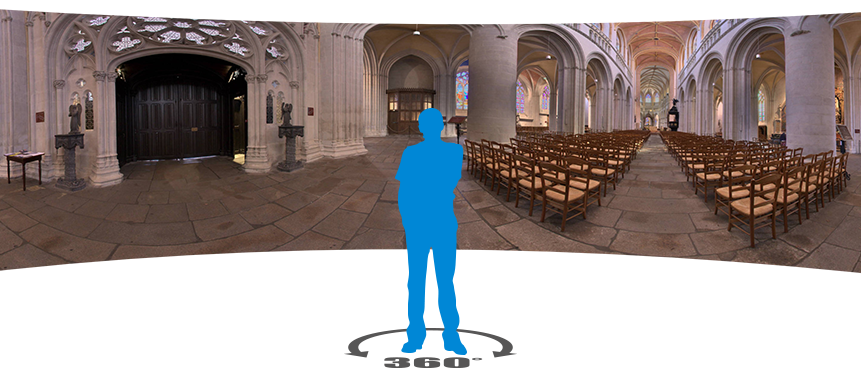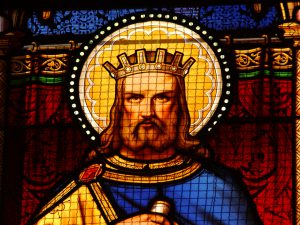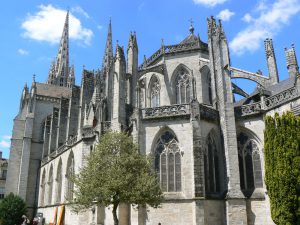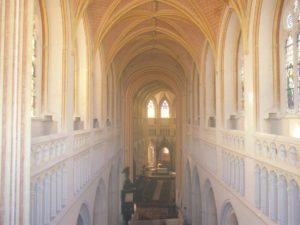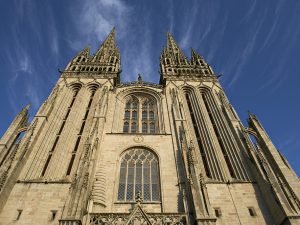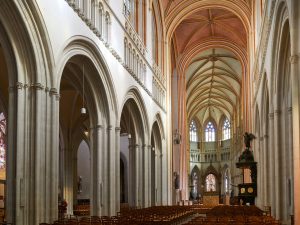La cathédrale Saint Corentin de Quimper, le joyau de l’art gothique breton
[Cliquez ici pour découvrir la fiche inventaire de la cathédrale]
Historique de la cathédrale Saint Corentin
C’est en 1239 que l’Evêque Raynaud décide de construire la cathédrale actuelle en s’appuyant sur les fondations d’une ancienne cathédrale romane. En 1410, les voûtes du choeur sont achevées, tandis que sont posées les verrières dans les fenêtres hautes. En 1424, l’Evêque Bertrand de Rosmadec entreprend la construction de la nef et des deux tours de la façade.
A partir des années 1850, l’architecte quimpérois Joseph Bigot entreprend la restauration de l’édifice, principalement le décor des chapelles et la commande de nouveaux vitraux détruits lors de la Révolution Française. Sa réalisation la plus spectaculaire reste l’achèvement des deux tours avec la construction des flèches entre 1854 et 1856, financée par les Quimpérois.
De 1989 à 1999, une campagne de restauration révèle l’aspect de la cathédrale à la fin du 15ème siècle : restitution des polychromies intérieures avec réapparition des nervures traitées en ocre jaune et ocre rouge et chaulage général des parements.
Saint Corentin
A l’époque du roi Gradlon, Saint Corentin s’établit en ermite sur l’actuelle commune de Plomodiern pour se consacrer entièrement à la prière. Le saint homme réalisa dès lors plusieurs miracles.
Un jour, Gradlon, le roi de Cornouaille s’en alla chasser avec sa troupe dans l’épaisse forêt qui recouvrait alors la plaine du Porzay. Le roi s’y égara et trouva finalement, fourbu et affamé, l’ermitage de Corentin. Celui-ci réussit le prodige de nourrir toute la troupe grâce à un seul petit poisson. C’était le poisson dont il se nourrissait quotidiennement : chaque jour il ne prélevait qu’une tranche, puis replaçait le poisson qui dans l’eau aussitôt se reconstituait. le roi, ébloui par ce prodige, décida de donner son château près du confluent (Quimper) à Corentin et lui demanda de devenir le premier évêque de son royaume.

